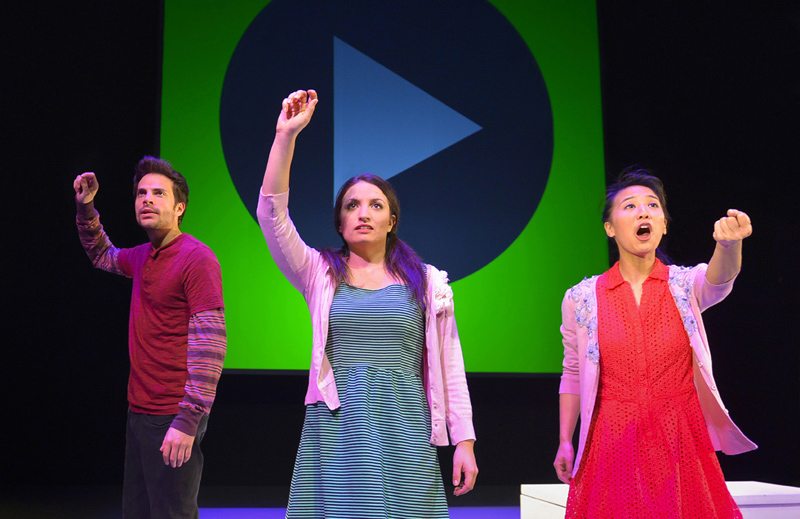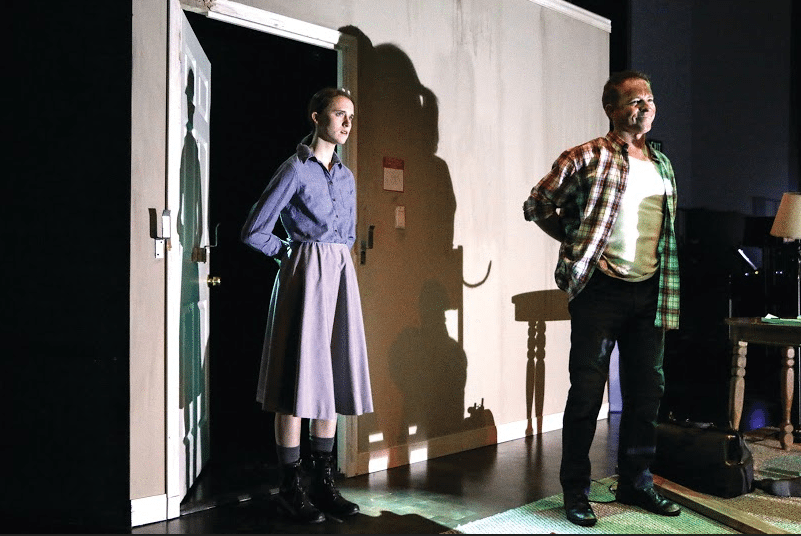by Charles Brousse
June was quite a month for the American Conservatory Theater.
Not since Bill Ball, its flamboyant founder, energized downtown San Francisco with his revolving opening night searchlights and liveried heralds standing on the outside balcony of the Geary Theater sounding trumpet fanfares, has there been so much public attention directed toward what has become a venerable cultural institution. June’s celebratory spirit was owed to the confluence of two events: On the Geary’s vast stage, a brilliant production of Stephen Sondheim’s A Little Night Music drew appreciative crowds; a few blocks away, near the corner of Seventh and Market streets, the company began introducing the public to its long-awaited second space, sleekly remodeled inside the homely concrete skin of the 1917-era Strand Theater.
While the achievement in Night Music is important, the Strand Theater renovation, because of its implications for the future, is far and away the more significant of the two events. Magnificent as it is, the Geary doesn’t offer scheduling flexibility, nor is it suited for the more intimate, smaller cast plays that originate in the off-Broadway, New York circuit that currently supplies material to much of the country’s nonprofit theater sector.
It’s something of an irony, though, that the vehicle chosen to inaugurate the 235-seat Strand Theater—Caryl Churchill’s Love and Information—could have just as easily (with a few high-tech improvements) been produced at the Geary. True, the 12-member cast is never on stage at one time except for the curtain call, but the right lighting for the 57 tiny scenes could have provided the necessary focus, and the giant video screen upstage that periodically filled with faces and numbers would have been right at home at the Geary.
Yes, you read that correctly. Churchill, whose fondness for breaking the rules of dramatic structure is well established, has really done it this time. Fifty-seven “scenelets,” lasting from five seconds to five minutes, most of them two-person encounters, each with a different subject, are presented (as the script specifies) in whatever order the producer chooses. There is no overall story line, no dramatic arc, no character development—no linear progression of any kind. It’s a content free-for-all that includes everything from personal matters, like sex and senile dementia, to reactions to Middle East conflicts. At times, the brevity is so extreme that one is left wondering what it’s all about; at other times, a single word or phrase is sufficient to set a chain of thought in motion, much like the impact of a particularly resonant photo or editorial cartoon.
The problem is that the plethora of actual or potential stories, with their almost instantaneous transitions within the one-hour-and-40-minute performance, doesn’t permit any reaction or feeling to develop before it is replaced. And so we come to Love and Information’s supreme irony. From program notes and interviews, I gather that Churchill’s goal is to draw attention to how “information overload” restricts our involvement in the emotional side of daily life. No doubt. But the ambiguous “love” she proposes as a response seems intellectually flabby, and the fragmented structure of her play only adds to the societal overstimulation that she regrets.
Some readers will note that I have omitted the usual comments on direction, performances and production values—all of which were strong, but overshadowed by the project’s unique characteristics.
NOW PLAYING: Love and Information runs through August 9 at the Strand Theater, 1127 Market Street (between Seventh and Eighth streets), San Francisco. For more information, call 415/749-2228, or visit act-sf.org.











